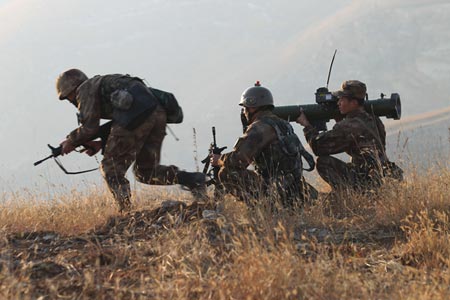
Major Restructuring of PLA Military Regions?
Publication: China Brief Volume: 9 Issue: 16
By:

A string of Chinese reports, which appeared in recent weeks leading to and following the People’s Liberation Army (PLA) 82nd birthday on August 1, seems to indicate that a debate over reforming China’s seven military regions is maturing. A major reform to the existing PLA’s seven military regions, which served as the framework for Chinese military planning and operations since 1985, has neither been confirmed nor denied by official sources. The story that these changes may be in the offing was broken by the Hong Kong-based monthly periodical, The Mirror (Jing Bao), which is a prominent journal covering Chinese elite politics and military strategy. According to its website, the magazine’s articles are also used as "internal references" in various departments at the central government level, and valued by the Chinese leadership (The Mirror [Hong Kong], August/Issue 385).
Citing unspecified military sources, the journal reported in the featured article of its August issue, stirringly titled "China’s Military Reform of the Century," that the PLA’s seven military regions (Shenyang, Beijing, Lanzhou, Jinan, Nanjing, Guangzhou and Chengdu) will be supplanted by four "strategic zones" (northern, eastern, western and southern) and a central region, which overlaps the current system of military regions. The article, penned by Liang Tianren, stated that each strategic zone will reportedly be under the command of a “small military commission” (xiao jun wei) composed of different branches of the armed forces and several provincial secretaries that fall within its jurisdiction. The heads (shu ji) of the commissions would be appointed by the PLA Central Military Commission (CMC), which is headed by the current President of the People’s Republic of China (PRC) and General Secretary of the Chinese Communist Party (CCP) Hu Jintao. These military commissions will be responsible for military operations and defense mobilization in the strategic zones (Wenwei Po [Hong Kong], August 1; China Times [Taiwan], August 3; The Mirror, August/Issue 385).
According to the journal article, the so-called Northern Strategic Zone will have jurisdiction over China’s three northeastern provinces: Liaoning Province, Jilin Province and Heilongjiang Province, as well as Inner Mongolia (which is currently under the jurisdiction of the Beijing Military Region), which essentially replaces the Shenyang Military Region. The Eastern Strategic Zone will have the same jurisdiction over the current Nanjing Military Region, plus the East Sea Fleet, air force, second artillery and armed police. The Southern Strategic Zone will have the same jurisdiction over the current Guangzhou Military Region and parts of the Chengdu Military Region (Yunnan Province and Guizhou Province), and the South Sea Fleet, air force, second artillery and armed police. The Western Strategic Zone will have jurisdiction over the remaining provinces that fall within the Chengdu Military Region and the entire Lanzhou Military Region. The Central Zone will have jurisdiction over the current Beijing Military Region (excluding Inner Mongolia) and the Jinan Military Region, and Hubei Province (which is currently under the jurisdiction of the Guangzhou Military Region), including the North Sea Fleet. The status of the Central Region in the overall military reform plan is reportedly a contentious issue as there are disagreements over whether or not the region should be made a strategic zone (Wenwei Po, August 1; China Times, August 3; The Mirror, August/Issue 385).
According to a military expert cited in The Mirror, the plan to divide the military regions into strategic zones will be guided by four principles: 1) consideration for long-term national strategy; 2) suitability to future war conditions; 3) sufficient battle depth in each strategic zone; and 4) structural dexterity, operability and less redundancy (The Mirror, August/Issue 385).
Indeed, such talks of military reforms are not unprecedented. According to Li Daguang, a military expert at the University of National Defense, "[r]elevant discussions have been ongoing for several years." In a report by the Global Times (Huangqiu Shibao)—the English arm of the CCP’s People’s Daily—Chinese military personnel reportedly have been mulling over the idea of establishing a cross-sectional mechanism to replace the traditional decision-making procedure, which had been dominated by the land force for quite some time, and have described the current make up of the seven military regions as "redundant" and "not up to the demand of modern military modernization or deployment" (Global Times, July 31).
Yet, an anonymous military source cited by Global Times ruled out the possibility that the Chinese military will carry out such a major reform this year, because "[t]he main tasks the Chinese military so far are to maintain stability along the borders and prepare for the military parade on National Day in October" (Global Times, July 31).
Although there are still noticeable disagreements as to whether or not the reforms will be carried out in the near-term or long-term, the fact that the debate is being parsed out openly in the public signals broader momentum behind the impetus for substantial military reform intended to boost the combat readiness of the PLA under modern conditions.





